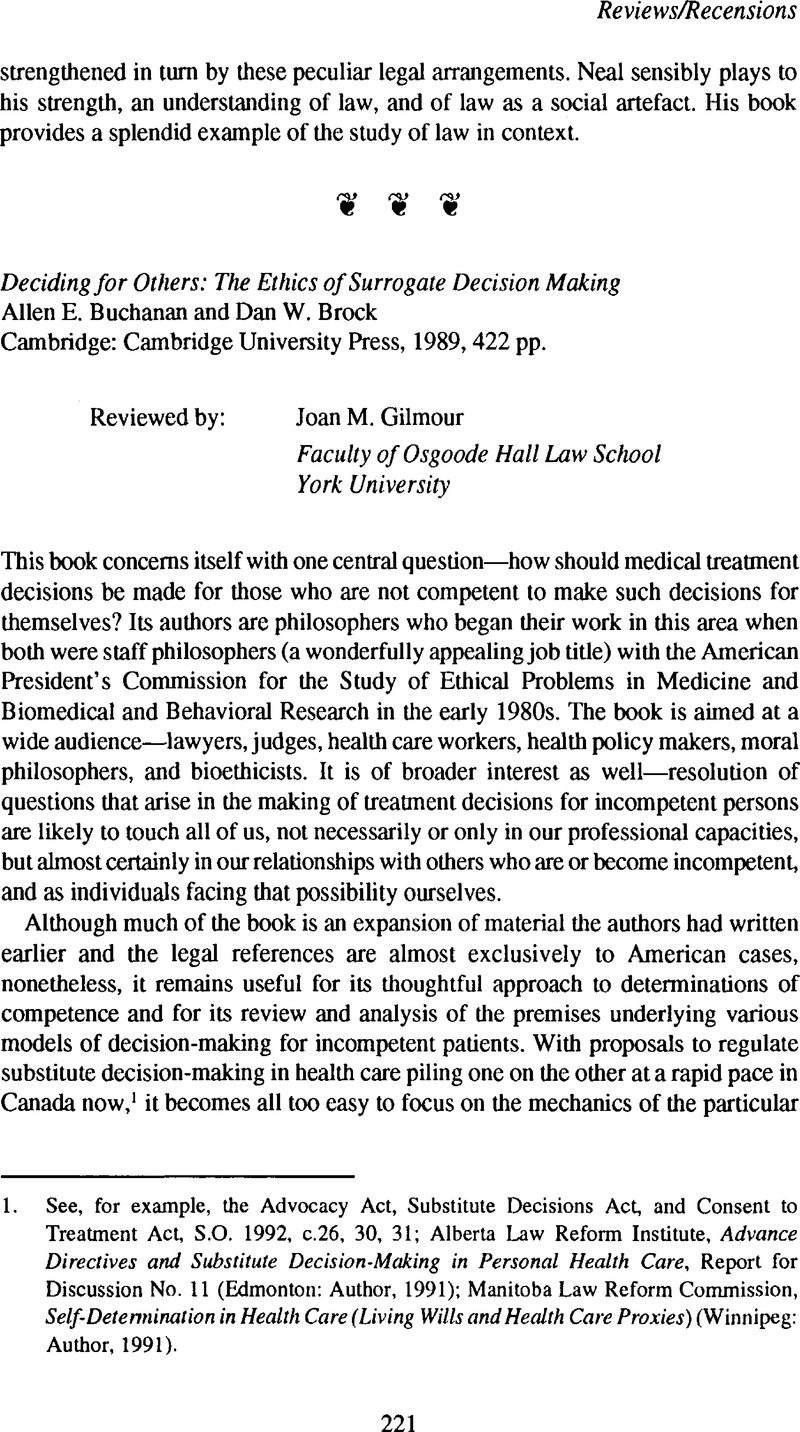Published online by Cambridge University Press: 18 July 2014

1. See, for example, the Advocacy Act, Substitute Decisions Act, and Consent to Treatment Act, S.O. 1992, c.26, 30, 31; Alberta Law Reform Institute, Advance Directives and Substitute Decision-Making in Personal Health Care, Report for Discussion No. 11 (Edmonton: Author, 1991)Google Scholar; Manitoba Law Reform Commission, Self-Determination in Health Care (Living Wills and Health Care Proxies) (Winnipeg: Author, 1991).Google Scholar
2. The authors would limit the role of formal testing to that of a “somewhat crude initial screen” establishing the need for further investigation. Their reservations about reliance on formal tests to determine competence are taken to such extreme lengths as to make their position subject to some reservations itself—witness their comment that “[w]hen patients are non-testable due to unconsciousness … this will be a reliable indication that the patient is not competent to give or refuse consent for treatment” (pp. 71–72).
3. See e.g., Burt, R., Taking Care of Strangers: The Rule of Law in Doctor-Patient Relations (New York: Collier Macmillan, 1979).Google Scholar
4. Re Eve (1987), 31 D.L.R. (4th) 2 (S.C.C.).
5. Ibid. at 34.
6. See, e.g., Re S.D. (1983), 42 B.C.L.R. 153 (Prov. Ct.); rev'd 145 D.L.R. (3d) 610 (B.C.C.A.) at 620, 623.
7. These tendencies can give rise to what has been termed “therapeutic relentlessness.” See Starr, P., The Social Transformation of American Medicine (New York: Basic Books, 1982) at 390.Google Scholar
8. See, e.g., the discussion of these points in Rhoden, N. K., “Litigating Life and Death” (1988) 102 Harv. L.R. 375 at 430.CrossRefGoogle ScholarPubMed
9. In that regard, see Goldberg, S., “The Changing Face of Death: Computers, Consciousness and Nancy Cruzan” (1991) 43 Stan. L.R. 659CrossRefGoogle ScholarPubMed, tracing changes in the idea of what it means to be a person.
10. For a contrasting view of decision-making relative to permanently unconscious patients, see, e.g., Burt, supra, note 3 at 144–74.
11. Bell, N. K., “If Age Becomes a Standard for Rationing Health Care” in Holmes, H. B. & Purdy, L. M., eds., Feminist Perspectives in Medical Ethics (Bloomington, IN: Indiana University Press, 1992) at 87.Google Scholar